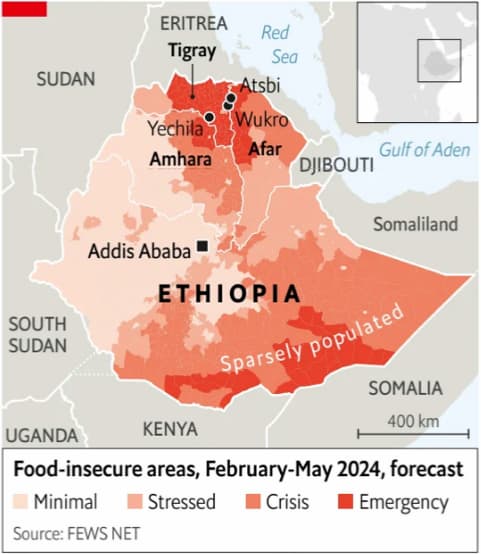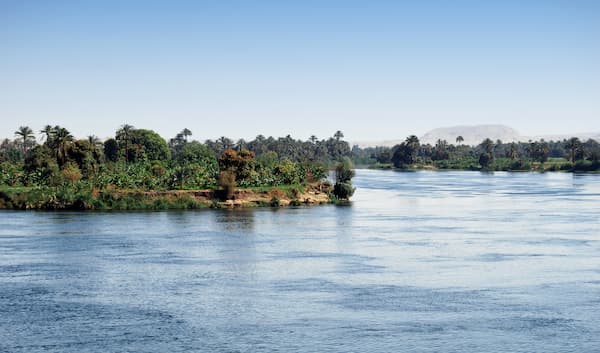Egypts and Ethiopias relation is becoming increasingly strained. At its core, it is primarily about water, the political effects of climate change, and the involvement of global powers. This dynamic is archetypal of many of the conflicts that we are likely to see in other parts of the world in the coming years.
This blog post is the final part of four on the relationship between the two countries.
Long-term Physical Survival vs. Short-term Financial Survival
In summary, the relationship between Ethiopia and Egypt centers on physical survival—the long-term access to fresh water. The amount of water they are fighting over is shrinking due to climate change. These problems are compounded by the fact that both countries are at risk of defaulting in the short term. It is difficult to plan and invest for the long term when short-term survival is in jeopardy.
Both countries’ short-term fate depends on foreign funding: Egypt primarily from the U.S., the EU, and the IMF, and Ethiopia from China, the U.S., and the EU. However, it also involves cultural considerations. Egypt strives to act as a Muslim link between the West and North African and Middle Eastern countries. Ethiopia’s multi-religious society is a better fit for China, but it cannot survive without support from the U.S. and the African Union.
Strategic Survival Involves Freedom to Trade with Whomever They Choose
Both countries' economies are low-tech, making it difficult for them to ignite rapid economic growth. Such growth is essential to avoid default. Another Achilles' heel is that both nations have only a few sources of foreign currency revenue—Egypt has the Suez Canal, and Ethiopia relies on the Grand Ethiopian Renaissance Dam (GERD).
Rapid economic growth requires strategic autonomy. This is why Ethiopia, since Eritrea’s secession, has sought to regain access to the sea. Ethiopia considers this a “matter of survival.”.
Over the past 15 years, Ethiopia has focused on Djibouti. This led to the construction of a BRI-financed railway from Addis Ababa to Djibouti. However, Djibouti’s port has limited capacity, and it is currently occupied by the naval bases of foreign powers such as the U.S., France, China, Japan, Italy, and soon Saudi Arabia. This has driven up port fees and created uncertainty about the possibility of long-term, stable agreements.
Leasing Port Space in Djibouti Is Not the Same as Having Their Own Port
In January of this year, Ethiopia signed a Memorandum of Understanding with Somaliland, Somalia’s northern autonomous region. The agreement included a 50-year lease of a coastal area near the port of Berbera. The payment included a stake in Ethiopian Airlines and a promise of international support for Somaliland’s desire for (re)independence from Somalia.
The deal sparked protests from most regional countries, including Egypt, as well as from the U.S., the EU, China, and Turkey ("the power in the middle"). All feared that it would worsen unrest from Yemen across the Gulf of Aden. This would further delay the prospect of political stability in the Red Sea and, by extension, shipping through the Suez Canal. The U.S. is already struggling to thwart Iran’s and Russia’s plans to establish naval bases in Sudan.
Egypt then escalated the crisis by giving it a religious tone, declaring full military support for its “Muslim brother country” Somalia. This activated Al-Shabaab.
In early September, Djibouti offered Ethiopia expanded access to its port. However, this does not address Ethiopia’s fundamental desire for strategic autonomy.
The Conflict Is Complex and Interconnected, as Geopolitics Always Is
The following factors could either escalate or de-escalate the conflict:
- Stopping further Houthi attacks in the Red Sea,
- This would require Saudi Arabia to intervene actively. However, Saudi Arabia’s army is not equipped or geared for land-based operations.
- Naval bases in Djibouti could launch targeted strikes (missile attacks), but they cannot stop the Houthi movement, which is supplied by Iran and Russia. They certainly cannot address the root cause of the Houthi movement, which is partly driven by a population on the brink of famine.
- The risk of more consecutive years of drought in Ethiopia, as seen in the 1980s. With GERD’s reservoir, Ethiopia can only offset a short-term drought.
- A deal on GERD that fairly shares the risks of drought between the countries could help, but if Ethiopia has not achieved rapid economic growth by then, what will they choose? Adhere to the agreement or avoid default and famine among their population?
- If Russia and Iran establish naval bases in Sudan, they could supply the Houthis more easily or other rebel groups in the region around the Red Sea.
- Hvis øget “trade fragmentation” fører til et stærkt BRICS+, vil USA da fortsat støtte Egypten lige meget?
However, the triggers for the conflict also depend on how financially patient yet prudent China, the U.S., and the EU choose to remain. This, in turn, depends on whether a more equitable way can be found to share the losses among the global powers. The IMF may be forced to tighten credit conditions if emergency loans are used solely to repay BRI loans.


